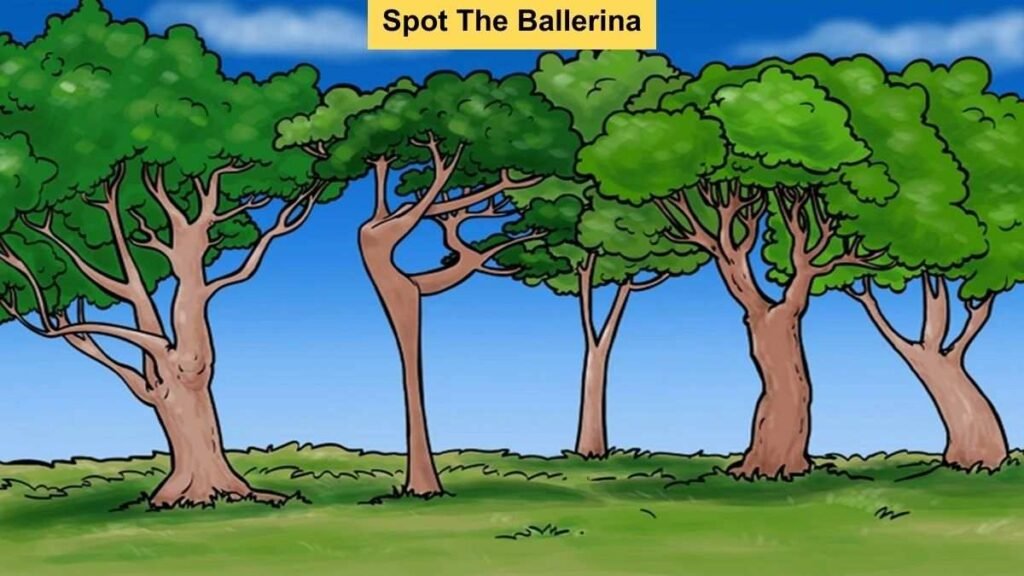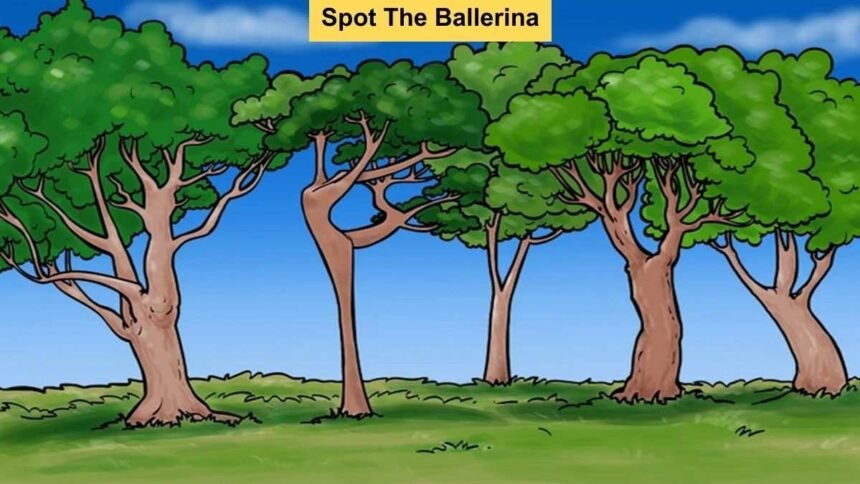Optical illusions have fascinated humanity for centuries, offering a glimpse into the intricate workings of the human mind and perception.
From ambiguous figures to mesmerizing patterns, these illusions challenge our understanding of reality and showcase the remarkable capabilities of our visual system.
One such intriguing phenomenon is the Ballerina in Trees optical illusion, which has recently captivated the internet with its baffling complexity. In this article, we delve into the science behind optical illusions, dissect the Ballerina in Trees illusion, and explore the fascinating world of visual perception.
Understanding Optical Illusions

To comprehend the Ballerina in Trees illusion and its implications, it is crucial to first grasp the fundamentals of optical illusions.
At their core, optical illusions are perceptual distortions that trick our brains into perceiving something that does not correspond with reality.
These illusions exploit various principles of visual perception, including depth perception, contrast, and gestalt principles such as closure and figure-ground relationships.
The human visual system is a complex network of neurons and pathways that work seamlessly to interpret the visual input received by our eyes.
However, this system is not infallible and is susceptible to misinterpretations and errors.
Optical illusions arise when our brains make incorrect assumptions or interpretations based on the visual information presented to us.
The Ballerina in Trees Optical Illusion: Deciphering the Enigma
The Ballerina in Trees illusion is a recent addition to the repertoire of optical illusions that have perplexed and intrigued viewers worldwide.
The illusion presents a seemingly innocuous image of a forest scene, with trees arranged in a random pattern.
However, hidden within the foliage is the silhouette of a ballerina gracefully poised in a pirouette.
What makes this illusion particularly fascinating is its elusive nature – not everyone can perceive the ballerina immediately upon viewing the image.
Instead, some individuals may struggle to discern the hidden figure amidst the intricate patterns of the trees.
Moreover, the illusion is accompanied by a challenge: can you spot the ballerina within seven seconds?
The Seven-Second Challenge: Testing Visual Acuity

The notion of spotting the ballerina within seven seconds adds an element of urgency and excitement to the illusion.
It transforms the viewing experience into a test of visual acuity and perceptual prowess, challenging participants to quickly identify the hidden figure before time runs out.
However, the arbitrary time limit also raises questions about the reliability and validity of such a test.
While some individuals may successfully locate the ballerina within the allotted time, others may struggle to do so despite repeated attempts.
This discrepancy highlights the variability in human perception and the subjective nature of visual experiences.
Factors such as attentional focus, cognitive load, and individual differences in visual processing can influence one’s ability to perceive the illusion within the stipulated timeframe.
The Science Behind the Illusion: Gestalt Principles and Visual Processing
To understand why some individuals may find it easier to perceive the ballerina in the Trees illusion than others, it is essential to examine the underlying principles of visual processing.
Gestalt psychology offers valuable insights into how we perceive and organize visual information, emphasizing principles such as proximity, similarity, continuity, and closure.
In the context of the Ballerina in Trees illusion, gestalt principles play a crucial role in determining whether individuals can discern the hidden figure amidst the complex patterns of the foliage.
Those who can quickly identify the ballerina may rely on their ability to perceive meaningful patterns and complete incomplete figures, a phenomenon known as closure.
In contrast, individuals who struggle with the illusion may experience difficulty in organizing the visual elements into a coherent whole, leading to perceptual ambiguity and confusion.
Moreover, factors such as contrast and visual saliency can influence the ease with which the ballerina is perceived.
If the silhouette of the ballerina contrasts sharply with the background foliage and exhibits greater visual saliency, individuals may find it easier to detect the hidden figure within the image.
Conversely, if the contrast is low and the ballerina blends seamlessly with the surrounding trees, perception becomes more challenging, requiring greater effort and concentration.
Implications for Visual Perception and Cognitive Science
The Ballerina in Trees illusion serves as a captivating case study for understanding the complexities of visual perception and cognitive processing.
By examining why some individuals can quickly spot the hidden figure while others struggle to do so, researchers gain valuable insights into the mechanisms underlying human perception and attention.
Furthermore, the illusion underscores the subjective nature of visual experiences and the importance of individual differences in perception.
What may appear obvious to one person may remain elusive to another, highlighting the inherent variability in human cognition.
This variability has significant implications for fields such as cognitive science, psychology, and neuroscience, where understanding the mechanisms of perception is paramount.
Conclusion
The Ballerina in Trees optical illusion represents a fascinating intersection of art, science, and perception. Its intricate design and elusive nature challenge viewers to explore the depths of their visual acuity and cognitive processing.
As we unravel the mysteries of optical illusions, we gain a deeper appreciation for the complexities of the human mind and the remarkable capabilities of our visual system.
So, can you pass the Ballerina in Trees vision test in seven seconds?
The answer may lie in the intricate interplay of perception, cognition, and individual differences that shape our unique visual experiences.

